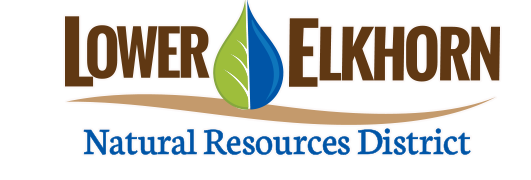Working together to adopt a conservation mindset
/Norfolk, NE - Last year, we saw the driest year on record for Norfolk. The National Weather Service’s Karl Stefan Memorial Airport station recorded a total of 13.72” of precipitation for the year – a deviation of 13.74” from normal. While we’ve recently been fortunate to have received some precipitation, the area is still well below average. Much of northeast Nebraska is still designated as D4 (Exceptional) or D3 (Extreme) on the U.S. Drought Monitor.
“We’re in a drought, and it’s important that we’re all conserving the groundwater we share. It’s an important issue for all of us since we cannot survive without access to a reliable and safe source of drinking water,” said Brian Bruckner, Interim General Manager for the Lower Elkhorn Natural Resources District (LENRD). According to the United States Environmental Protection Agency (EPA), even though about 70% of the Earth’s surface is covered by water, less than 1% is available for human use. And despite the water supply challenges faced by many communities across the U.S., each American uses an average of 82 gallons of water each day at home.
You may wonder how this affects you, or what you can do to make a difference. “It’s about being responsible with our resources and being accountable to our neighbors by assuring them that we’re doing all that we can to share this resource with everyone around us,” said Bruckner. “Conservation of the resource not only benefits the aquifer but limiting use helps to extend the life of the expensive infrastructure by reducing wear and tear on critical components.”
We can all improve our use of water by being more mindful of our actions such as: checking for leaks, installing water-saving appliances, and managing our sprinklers more efficiently. According to EPA, bathrooms are the largest use of water in the home – using more than 50% of all indoor water. Instead of a bath, opt to take a quick shower instead. Having a low-flow shower head will also help ensure more efficient water usage as these use a third less water than regular shower heads. Another area for water conservation inside the home is the kitchen. If your home is equipped with a dishwasher, most are proven to be a more efficient means of cleaning dishes as opposed to washing them in the sink.
Not only are there ways to reduce water use inside, but outdoors as well. According to the EPA website and information booklet, Water Saving Tips For Your Home, residential outdoor water use across the U.S. accounts for nearly 8 billion gallons of water each day – mainly for landscape irrigation. To allow your lawn to absorb moisture better, Ready.gov encourages watering early in the morning or later in the evening when temperatures are cooler. It is also important to avoid overwatering your lawn. Most of the year, lawns only need one inch of water per week. You can check to see if the soil is moist by using a soil probe, spade, or large screwdriver. If the soil is moist, then the lawn doesn’t need more water. Not only that but it’s also beneficial to keep your grass longer. Longer grass promotes deeper root growth and a more drought resistant lawn.
If you own a private well, one of the most important things you can do is to be proactive in the maintenance of your well. If you’ve had issues with your well in the past, or you’re concerned about the well’s performance, it could become problematic during dry conditions. It’s also a good idea to know the location of your well (using GPS coordinates), the total depth, static water level, and age of your well. This information will help well owners answer important questions when a well is not functioning properly. All new wells are required to be registered with the State of Nebraska at: https://dnr.nebraska.gov/groundwater, and if you have an older well that is unregistered, it would be wise to get it properly registered.
The LENRD has the responsibility to develop, manage, utilize and conserve groundwater and surface water wisely. “It’s important to adopt the mindset that the current dry cycle could be part of a multi-year weather pattern,” said Bruckner. “There’s value in preparing ourselves for what’s ahead and conserving our groundwater to help resolve present and future water quantity issues, protecting all groundwater users.”
If you want to learn more about how you can help preserve our groundwater, check out these great resources!:
https://www.epa.gov/watersense
